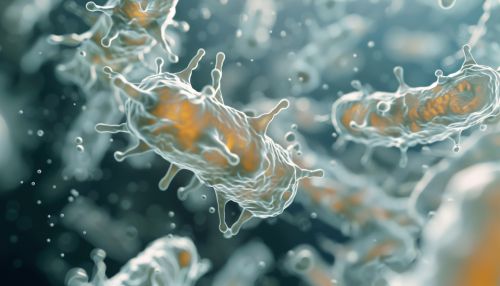Bacterial motility
Introduction
Bacterial motility is the ability of bacteria to move independently using metabolic energy. This movement is a significant aspect of the bacteria's capacity to survive and proliferate in various environments. Bacterial motility is a complex process that involves numerous cellular components and regulatory mechanisms.


Types of Bacterial Motility
There are several types of bacterial motility, including swimming, swarming, twitching, gliding, and sliding. Each type of motility is characterized by unique mechanisms and is influenced by different environmental conditions.
Swimming
Swimming is the most common type of bacterial motility, facilitated by appendages known as flagella. Flagella are long, whip-like structures that rotate to propel the bacterium through a liquid medium.
Swarming
Swarming is a type of bacterial motility observed on moist surfaces. This movement is coordinated and involves the movement of a bacterial population en masse. Like swimming, swarming is also facilitated by flagella.
Twitching
Twitching motility is a type of movement that occurs on solid surfaces and is mediated by type IV pili. These are short, hair-like structures on the bacterial surface that extend and retract, pulling the bacterium forward.
Gliding
Gliding motility is a type of movement observed in certain bacteria that allows them to move smoothly along a solid surface. The exact mechanism of gliding motility is not fully understood, but it is believed to involve the secretion of a slimy film that helps the bacterium slide along the surface.
Sliding
Sliding motility is a passive type of movement that occurs when a bacterium grows in a film of its own secretions, causing it to slide along the surface.
Mechanisms of Bacterial Motility
The mechanisms of bacterial motility are complex and involve various cellular components and regulatory processes. These mechanisms differ depending on the type of motility.
Mechanism of Swimming
The mechanism of swimming involves the rotation of flagella. The flagellum is composed of a filament, a hook, and a basal body. The basal body acts as a motor, using the energy derived from the proton motive force to rotate the flagellum and propel the bacterium through a liquid medium.
Mechanism of Swarming
Swarming involves the coordinated movement of a bacterial population. This type of motility is influenced by quorum sensing, a form of bacterial communication that allows bacteria to coordinate their behavior based on population density.
Mechanism of Twitching
Twitching motility involves the extension and retraction of type IV pili. The pilus extends by the addition of pilin subunits at the base, and retracts by the removal of subunits from the tip. This cycle of extension and retraction pulls the bacterium forward.
Mechanism of Gliding
The mechanism of gliding motility is not fully understood. However, it is believed to involve the secretion of a slimy film that helps the bacterium slide along the surface. This film may be composed of polysaccharides or other extracellular substances.
Mechanism of Sliding
Sliding motility occurs when a bacterium grows in a film of its own secretions, causing it to slide along the surface. This type of movement is passive and does not involve any specific motility appendages.
Regulation of Bacterial Motility
The regulation of bacterial motility involves various signaling pathways and regulatory proteins. These regulatory mechanisms ensure that the bacterium moves in response to environmental cues, a behavior known as chemotaxis.
Chemotaxis
Chemotaxis is the movement of a bacterium in response to chemical gradients. Bacteria can move toward beneficial chemicals (positive chemotaxis) or away from harmful chemicals (negative chemotaxis). The process of chemotaxis involves a series of steps, including signal detection, signal transduction, and motility response.
Role in Pathogenesis
Bacterial motility plays a crucial role in the pathogenesis of many bacterial infections. Motility allows bacteria to reach their target tissues, evade the host immune response, and establish infection.
